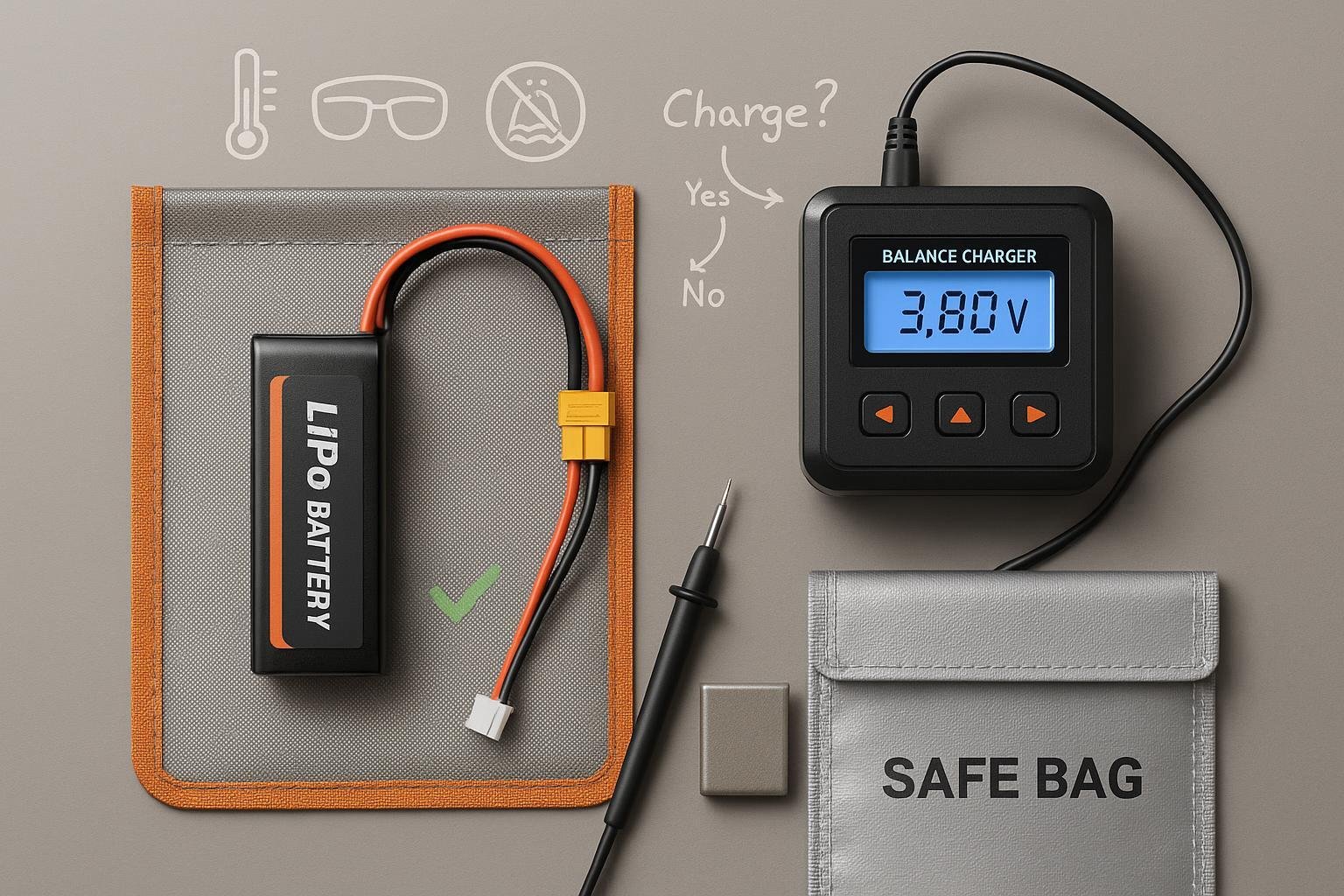
Updated for 2025. This practical guide shows you how to safely discharge LiPo (lithium‑polymer) batteries for two scenarios: 1) preparing healthy packs for storage, and 2) making end‑of‑life packs safe to recycle. You’ll use conservative settings, verify per‑cell voltages, and follow U.S. handling and disposal guidance.
- Difficulty: Beginner to intermediate
- Time: 10–60 minutes per pack (depends on capacity, current, and method)
- What you’ll need (varies by method): Balance charger with “Storage/Discharge” modes, LiPo‑safe bag or vented metal container, multimeter or cell checker, optional wattmeter, resistors or automotive bulbs (manual method), fire extinguisher + water source for cooling.
Why this matters: Storing LiPos at the wrong voltage shortens life. Discharging too quickly or too low can damage cells and increase fire risk. This guide keeps you safe while hitting the right voltage targets.
Read First: Safety Ground Rules
- Work on a fire‑resistant surface, away

